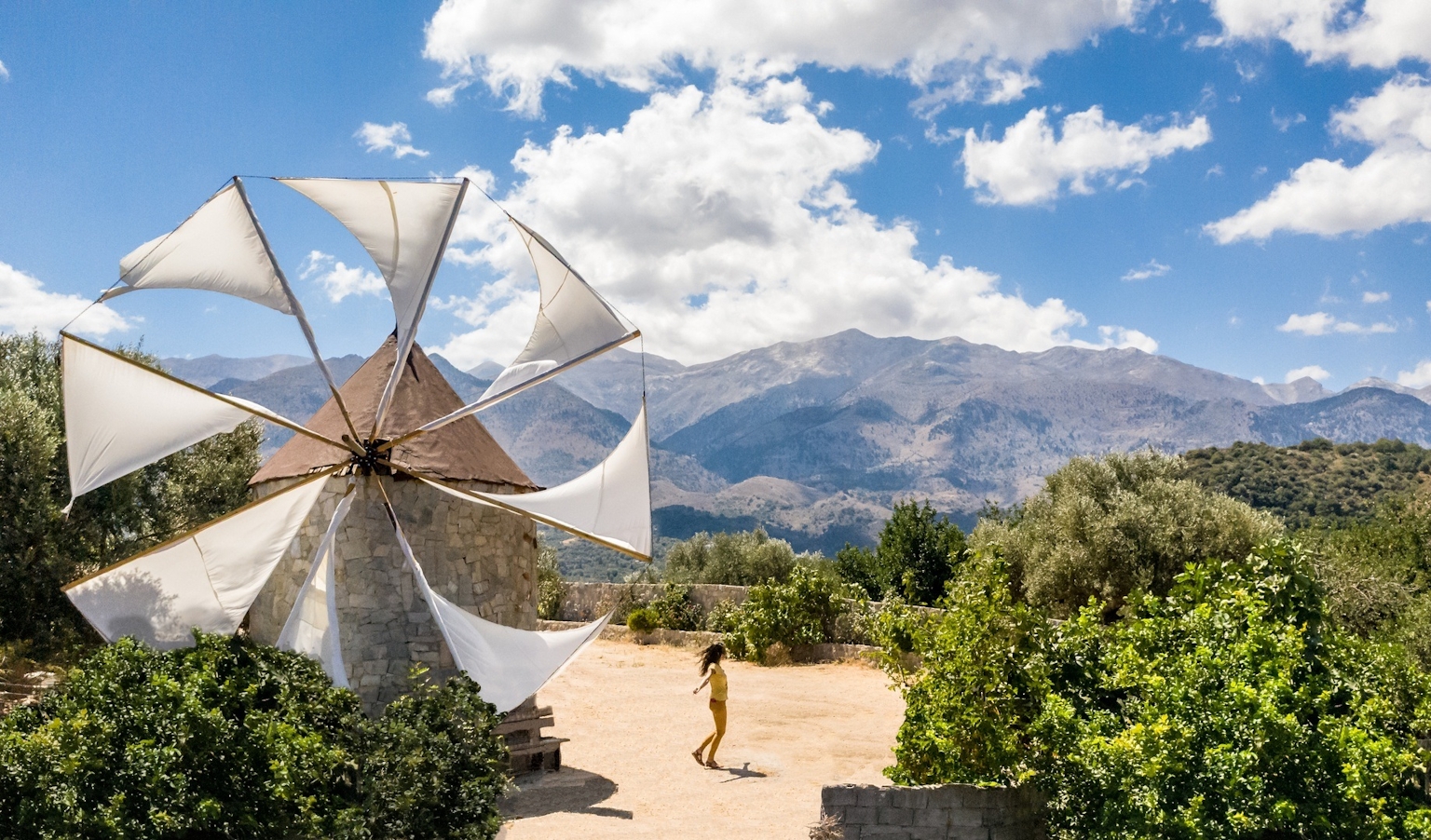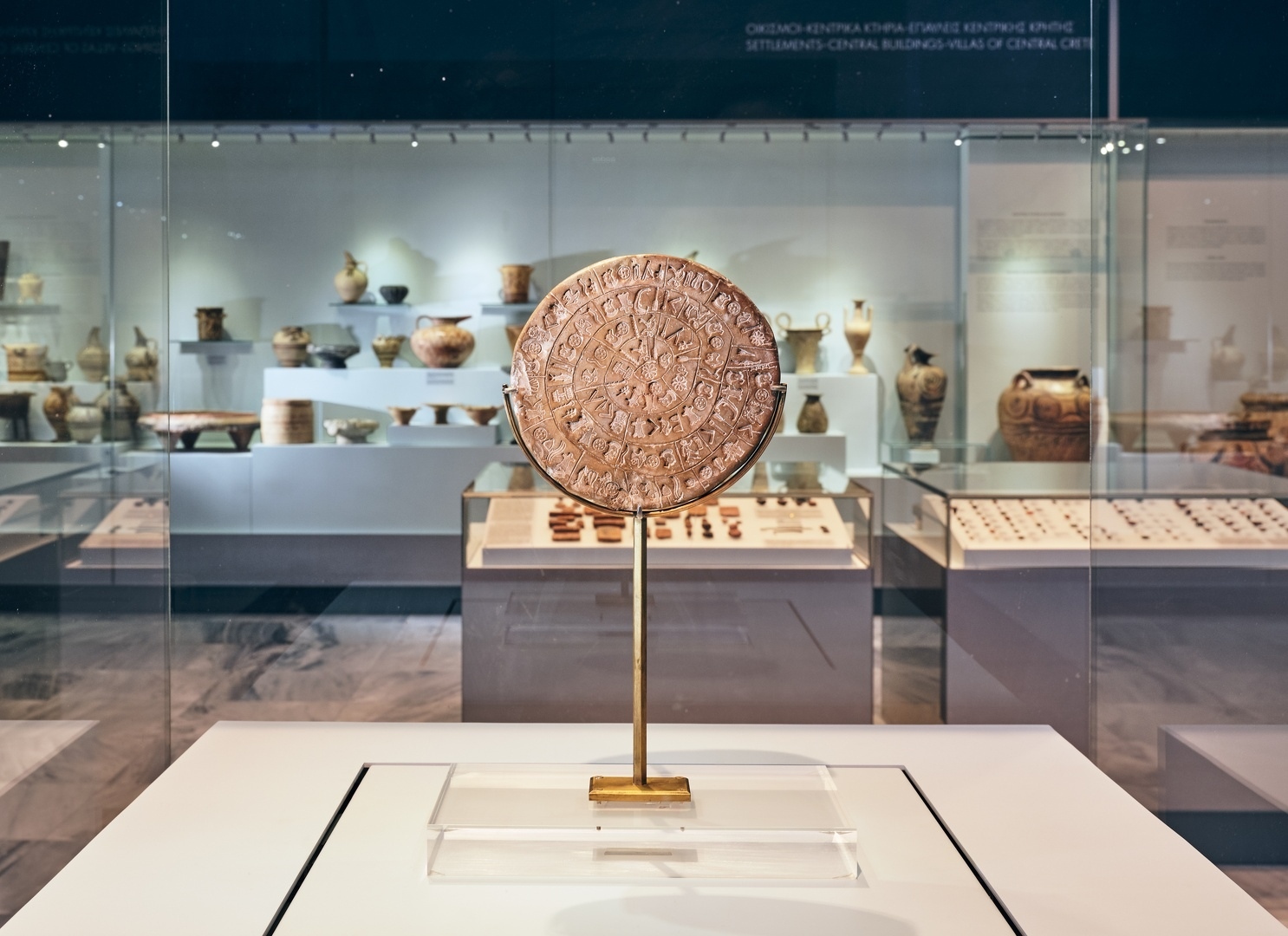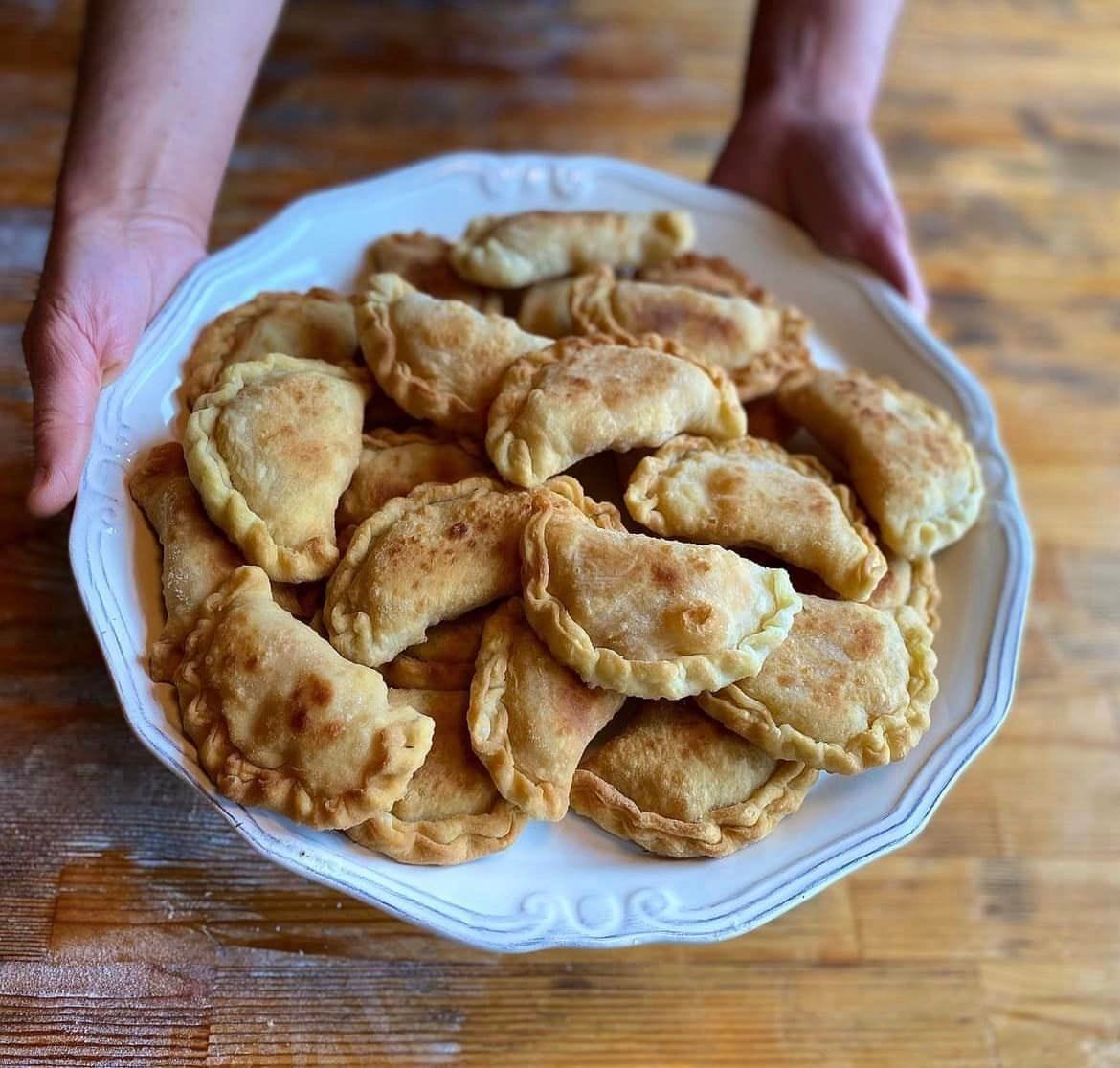
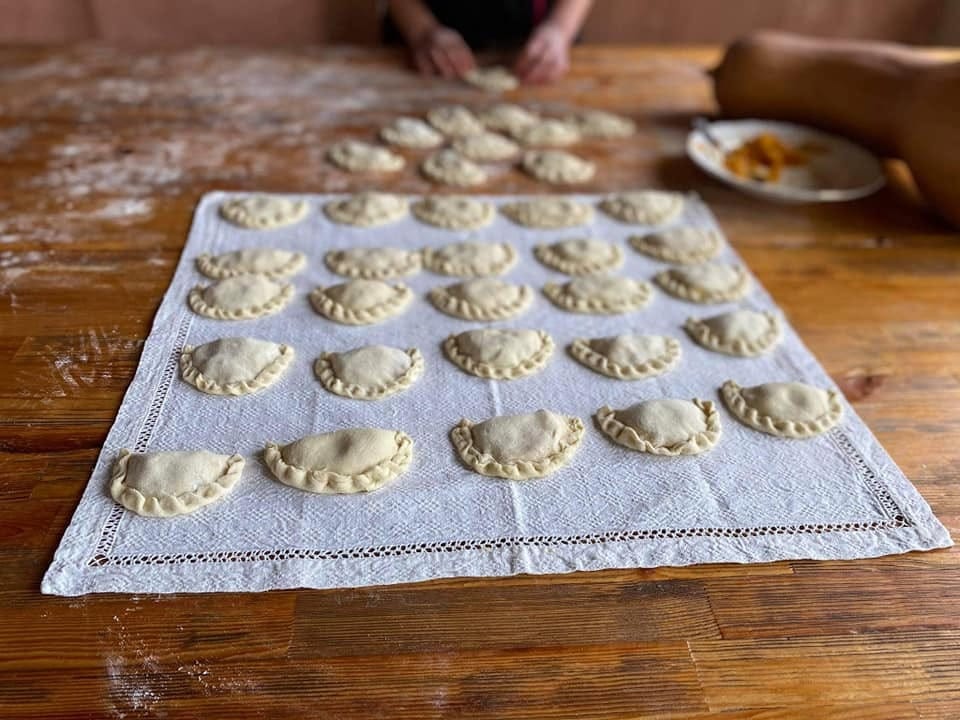
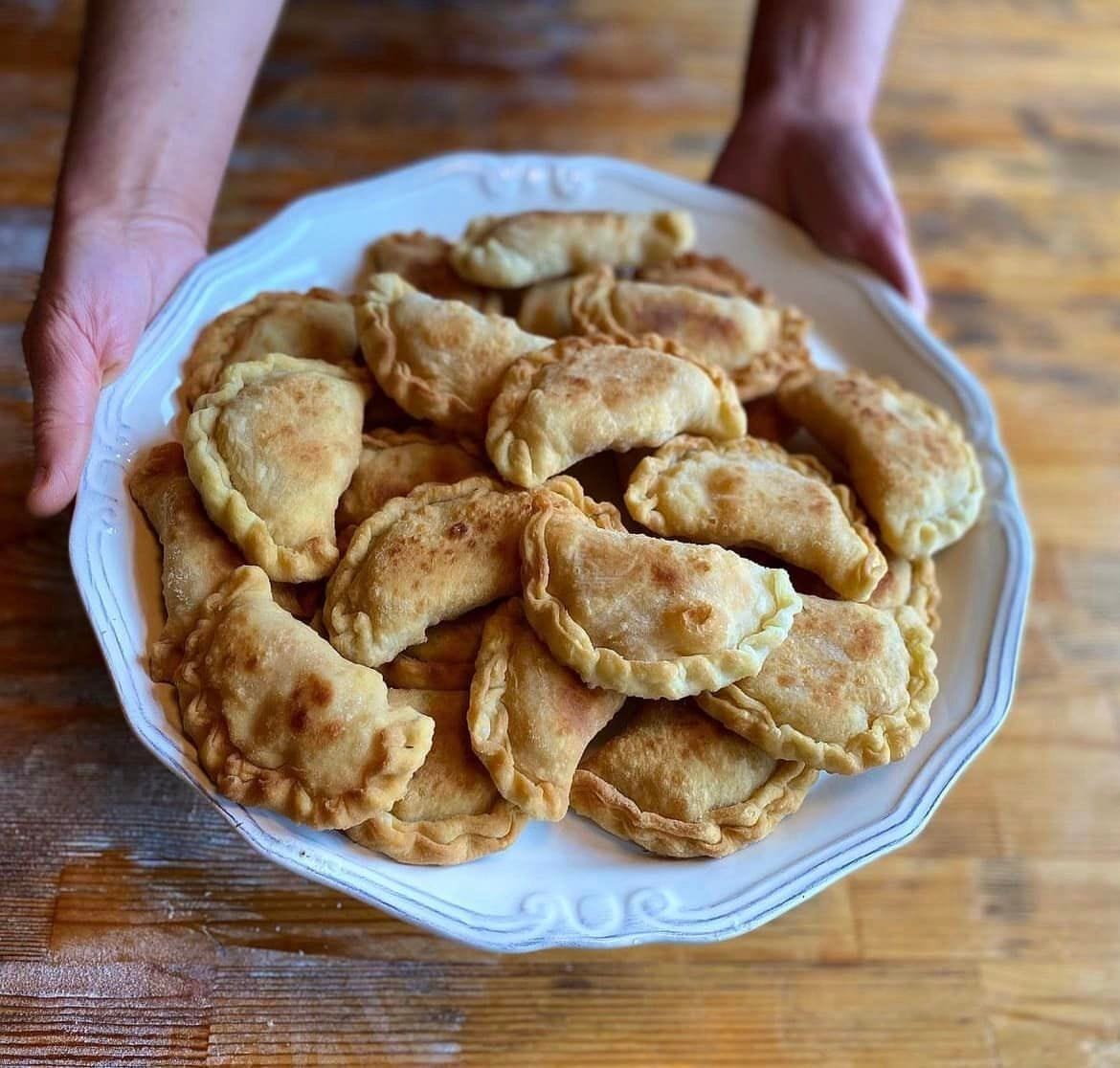
The “lady of the garden,” the sweet pumpkin—Crete’s local variety with the long neck and rounded edges—is a staple in every household. They are harvested in the autumn during the waning moon, so they won’t spoil, and stored in a well-ventilated, dry space. Sweet pumpkins can last up to 5 months.
Children crave them fried with sugar, men prefer them stewed with onions, and housewives make the most delicious pitarakia, filled with sweet pumpkin.
Dough Ingredients:
-
Flour, as much as needed
-
A little salt
-
1 small glass of olive oil
-
Juice from one small lemon
-
1 shot glass of tsikoudia
-
1 glass of lukewarm water
Filling Ingredients:
-
3 kilos sweet pumpkin (cleaned and cut into small pieces)
-
2 large onions, finely chopped
-
1 glass of olive oil
-
Salt, pepper, cumin
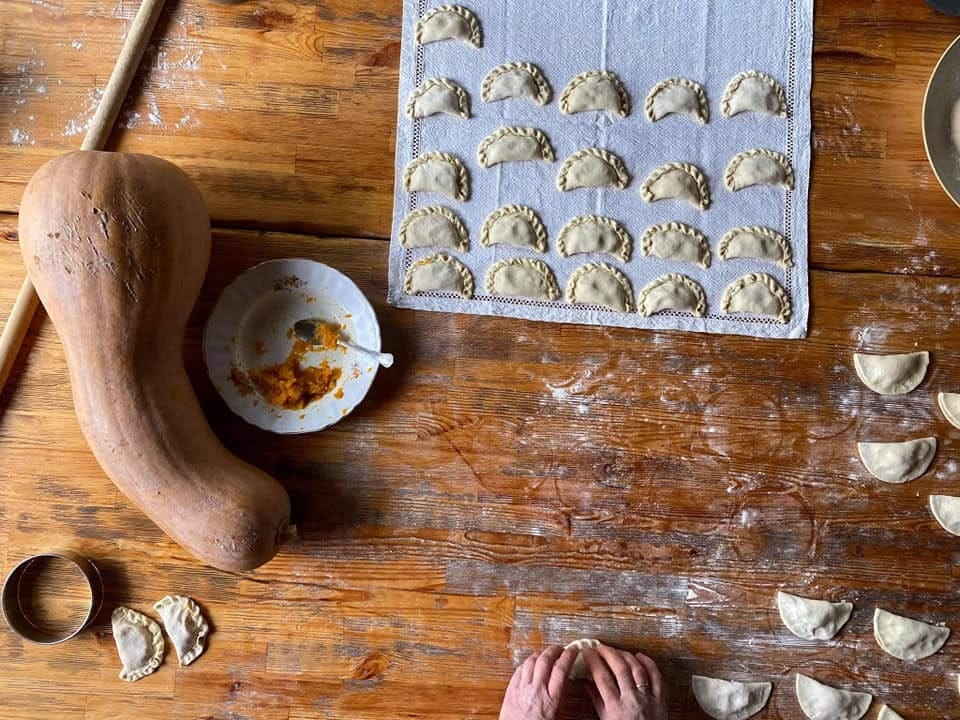
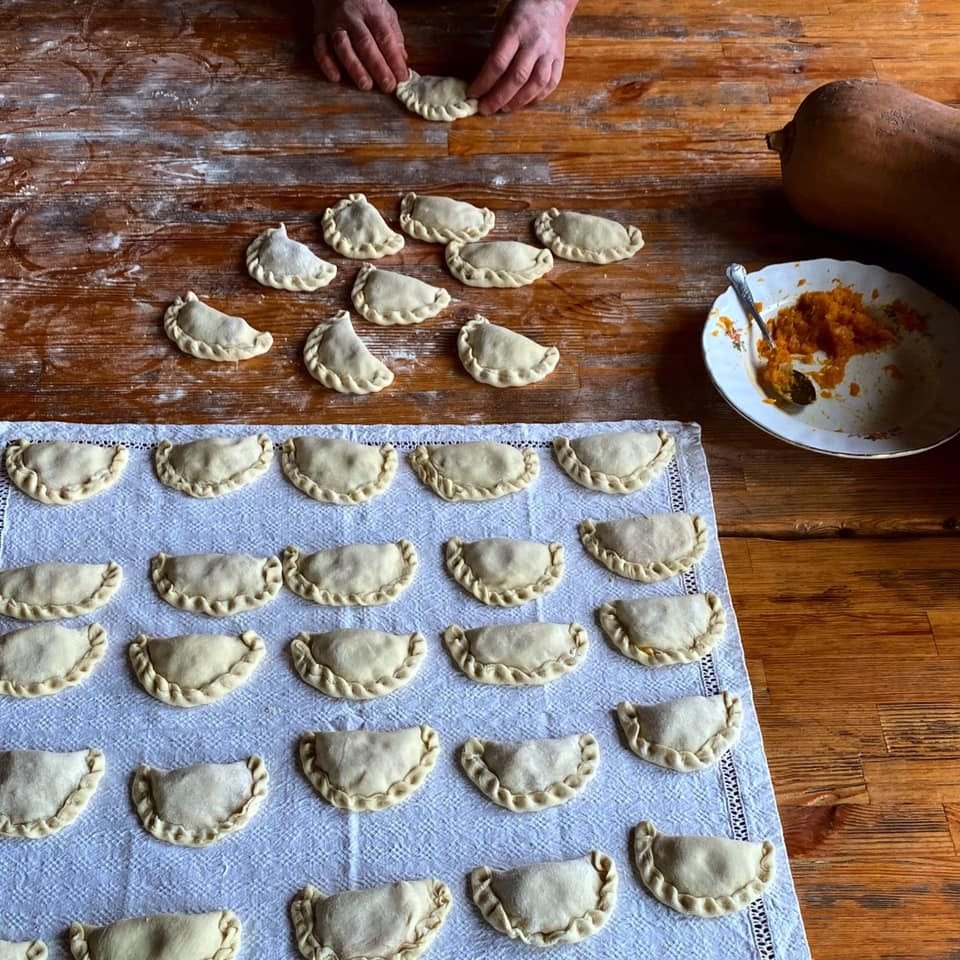
Step 1
Prepare the filling: The night before, in a deep pot, heat the olive oil and add the onion. Sauté and then add the pumpkin pieces. Let it cook slowly, stirring so it melts. Add the salt, pepper, and cumin. Continue cooking and once the pumpkin is cooked, place it in a colander and let it drain.
Step 2
Prepare the dough: In a mosora, add half the flour, make a small well in the center and pour in the dough ingredients. Mix and gradually add the remaining flour. Knead until the dough is medium-soft and doesn’t stick to your hands. Cover it with a clean cloth and let it rest for about an hour.
Step 3
Prepare the pastry: Using a xyliki, roll out a thin sheet of dough. Use a small dessert plate to cut out round pieces. Place a spoonful of filling in the center and fold it into a half-moon shape.
Step 4
In a frying pan, heat olive oil until hot and fry the pitarakia for 1 to 2 minutes on each side.
Cretan Dialect Glossary
mosora: large clay or metal basin
xyliki: wooden rolling pin for sheet pastry
Lena Igoumenaki
President of the Cretan Cuisine Festival Association
Cretan Cuisine Festival

Mizithropites: Authentic Cretan Pies
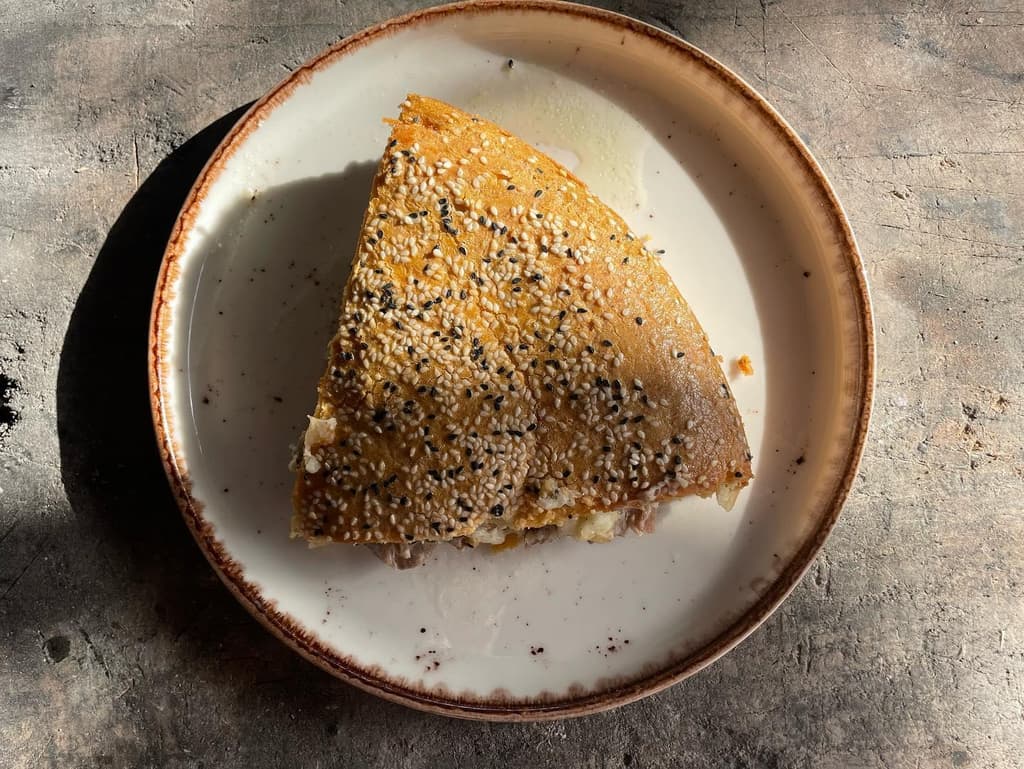
Meat cake
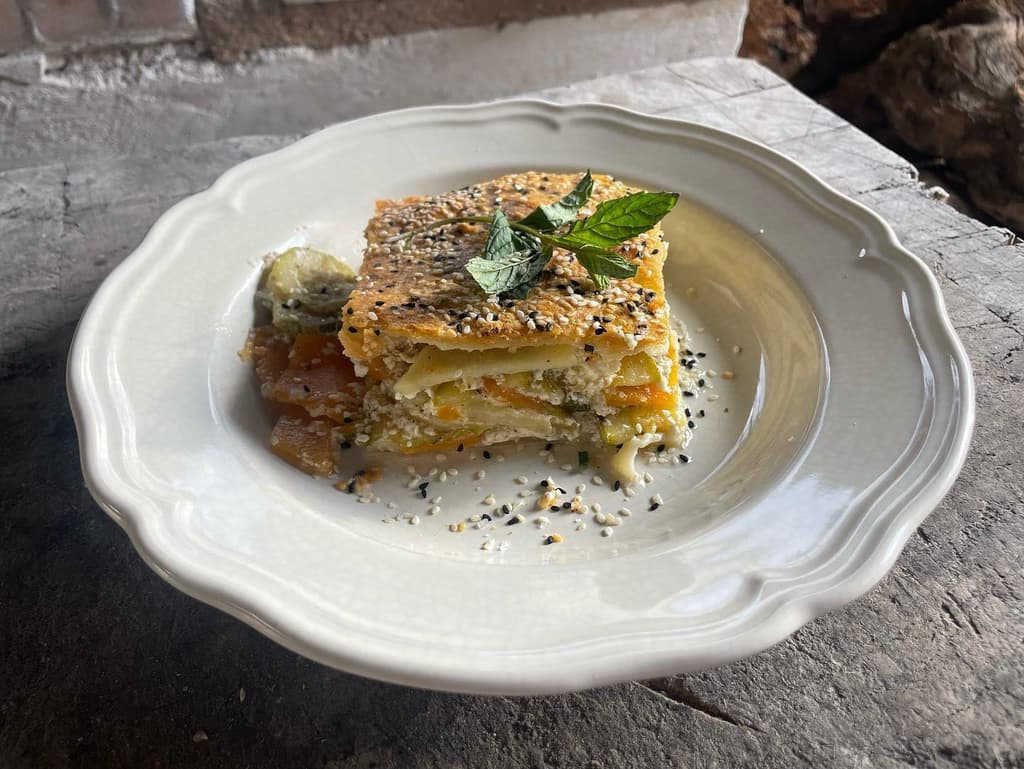
Chania Boureki or Courgette Boureki
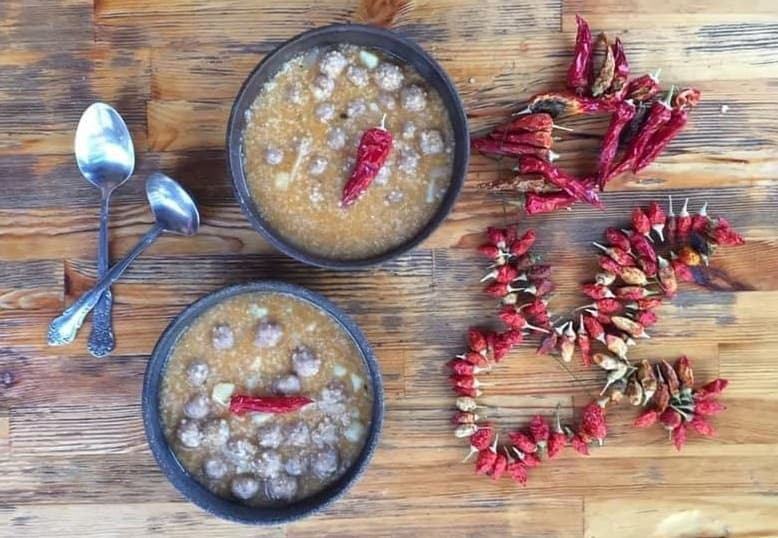
Topia (Balls)

The Traditional 'Bread of the Year'

Snails with Broad Beans and Artichokes

Cretan Ospriada or Palikaria (A Legume Dish)
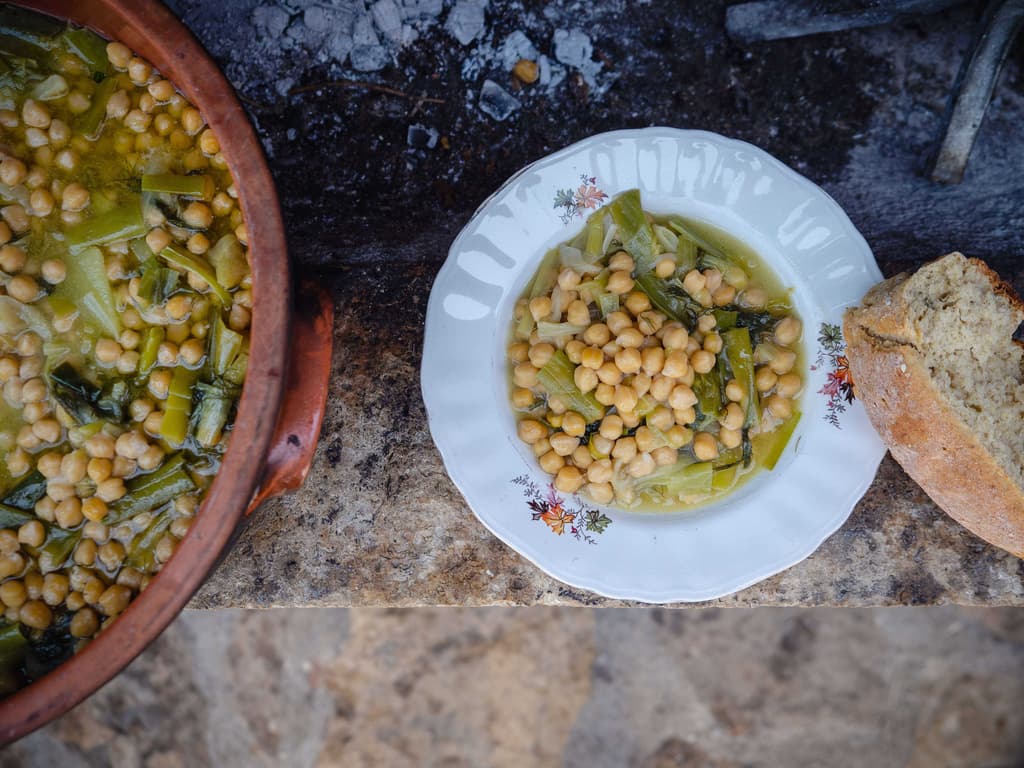
Chickpeas with Wild Leeks, Flour and Lemon Sauce

Pies with ‘Yachnera’ Greens

Fennel Pie

Sfakian Pie or Sfakianopita

Biscuits with Sesame Seeds

Sweet Rice Pie or 'Tzoulamas'

Apostoli White-Eyed Bean

Almond-Infused Goat Dish with Fennel: A Fresh Delight

Lazarosavato
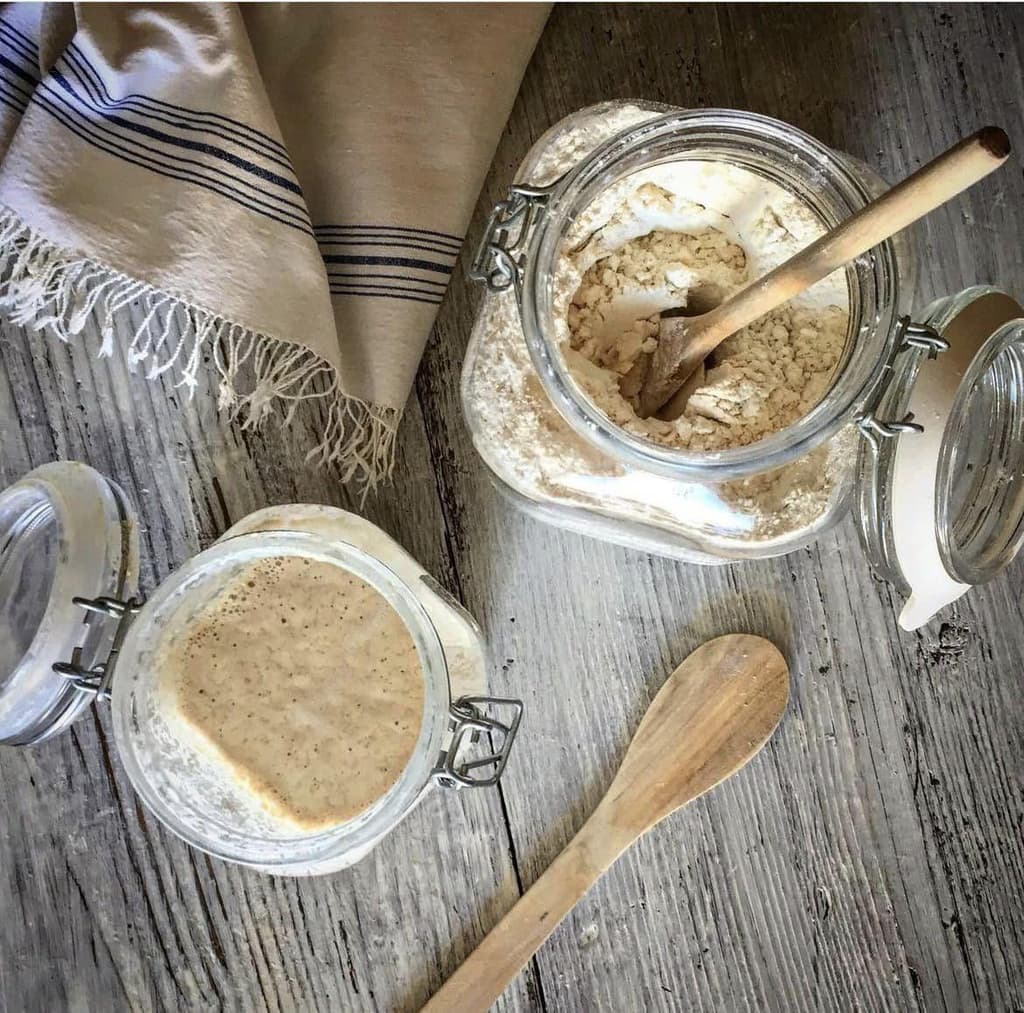
The Holy Week Sourdough

Nerati Mizithropita

Easter Eggs

Kalikota

Stuffed Courgette Flowers

Stuffed Vine Leaves

Cracked Wheat and Snails

Chochli Boubouristi (Snails Face Down)

Mangiri
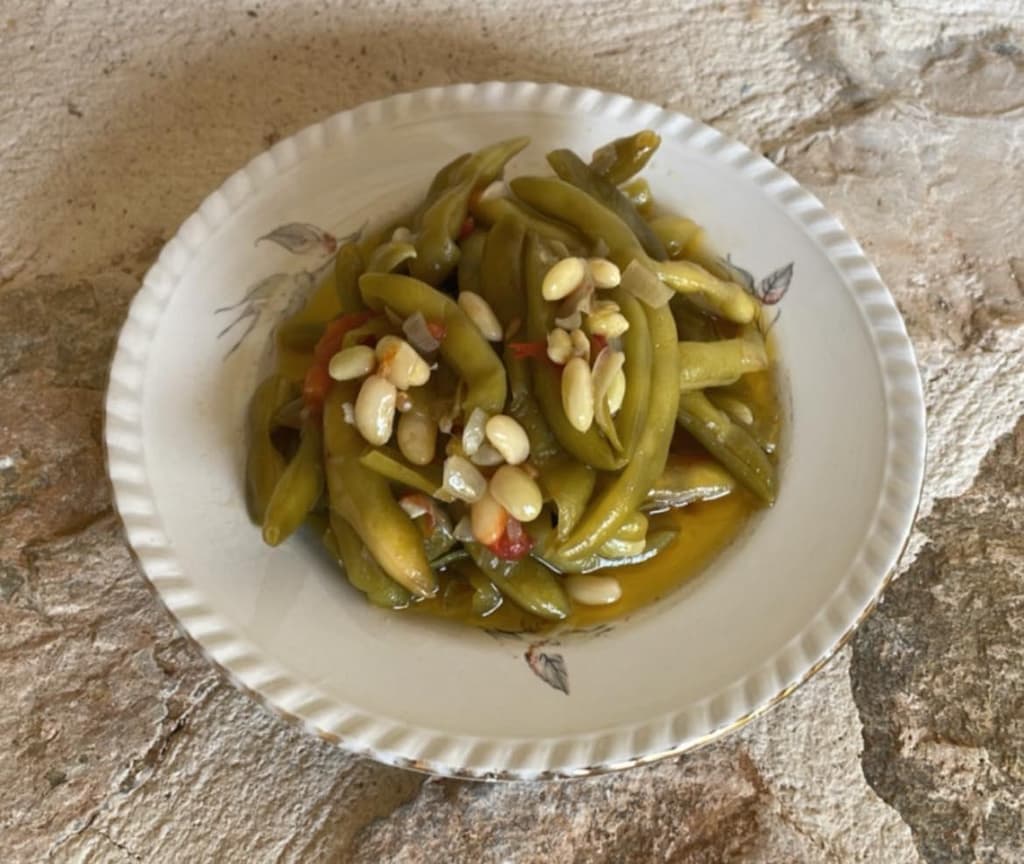
Symian Bean

Cretan Pilaf
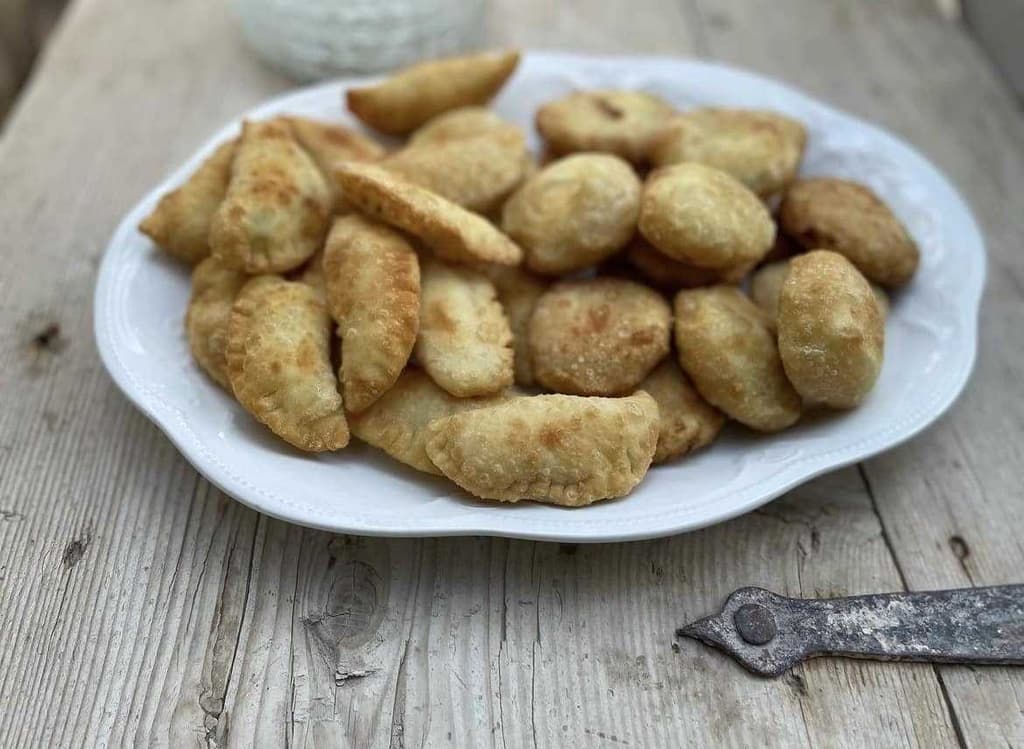
Rethymno Water Pies
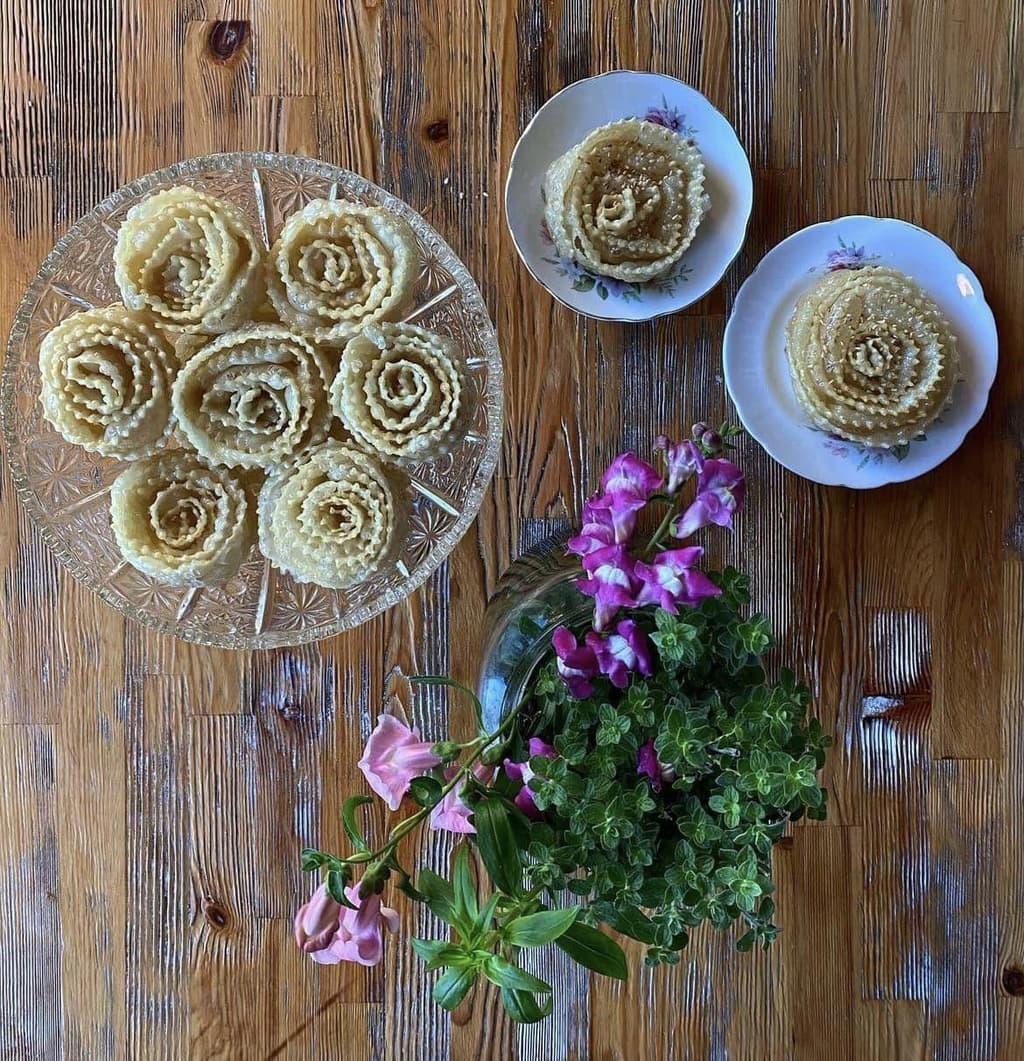
Xerotigana
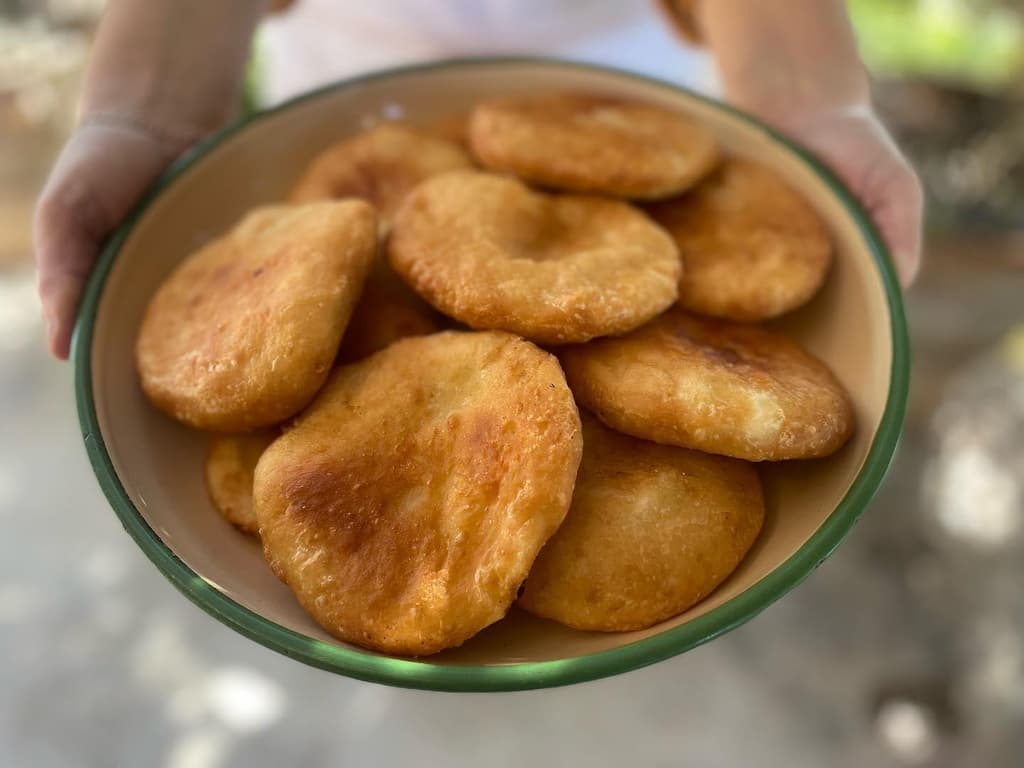
Agnopites
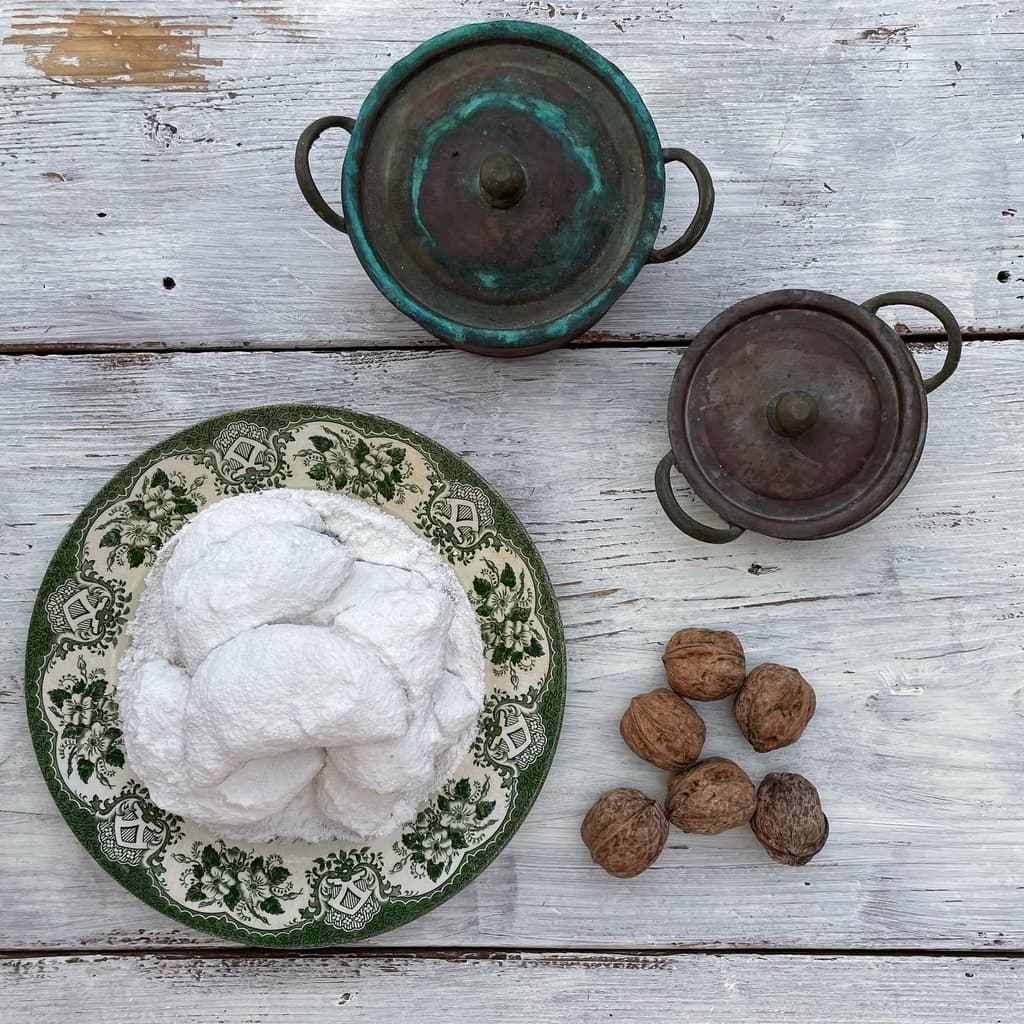
Patoudo
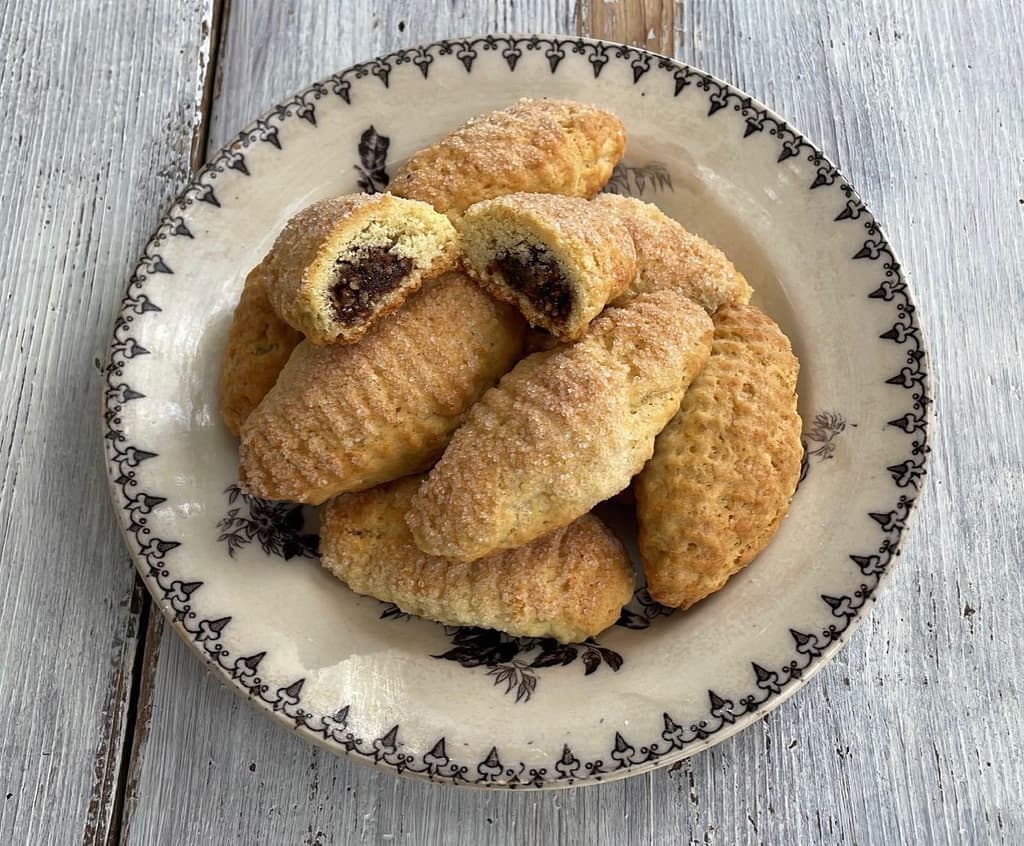
Safidota
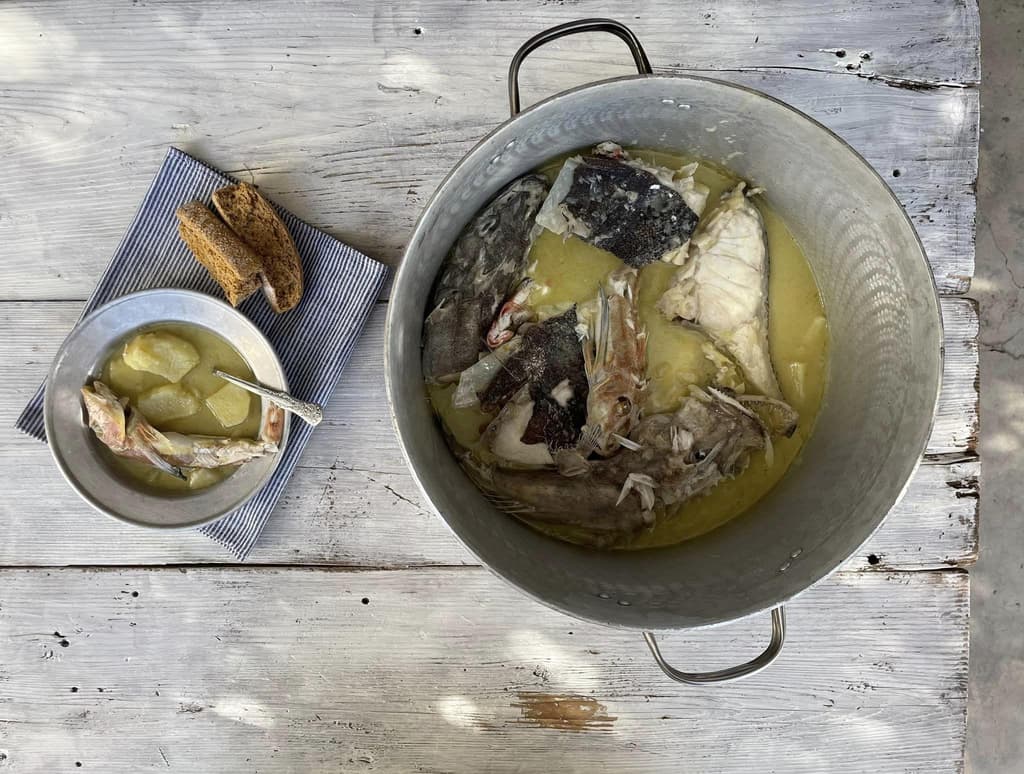
Kakavia (Fish Soup)

Cretan Greek salad

The Sweet Bounty of the Cretan Harvest

Okra and Unripe Grape

Kapriko
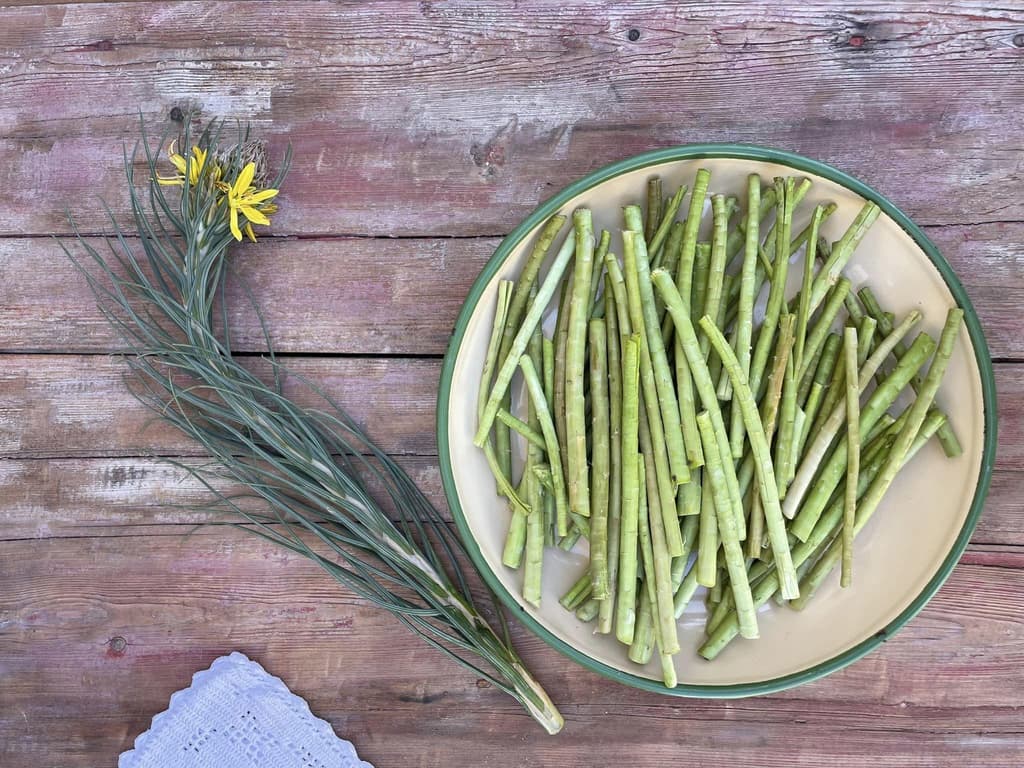
Discovering and Cooking Asphodelaceae: A Taste of Local Cuisine
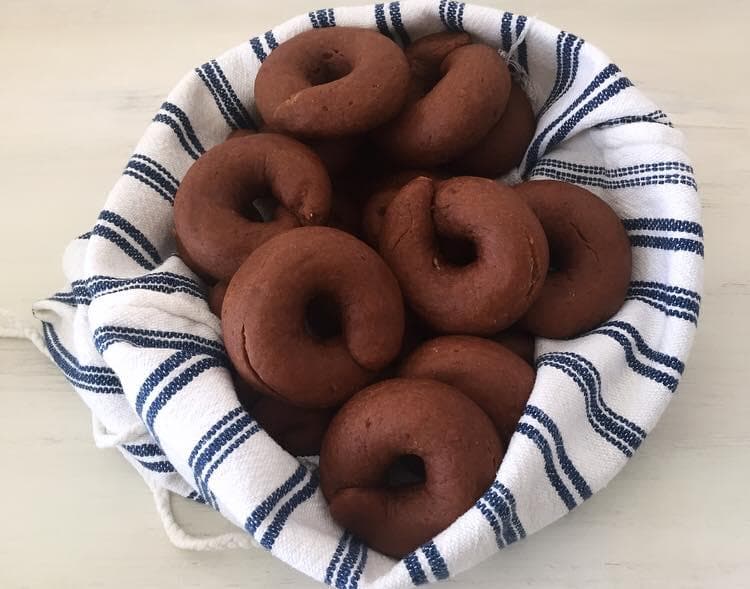
Moustokouloura

Pie with 'Yachnera' Greens: Baked to Perfection
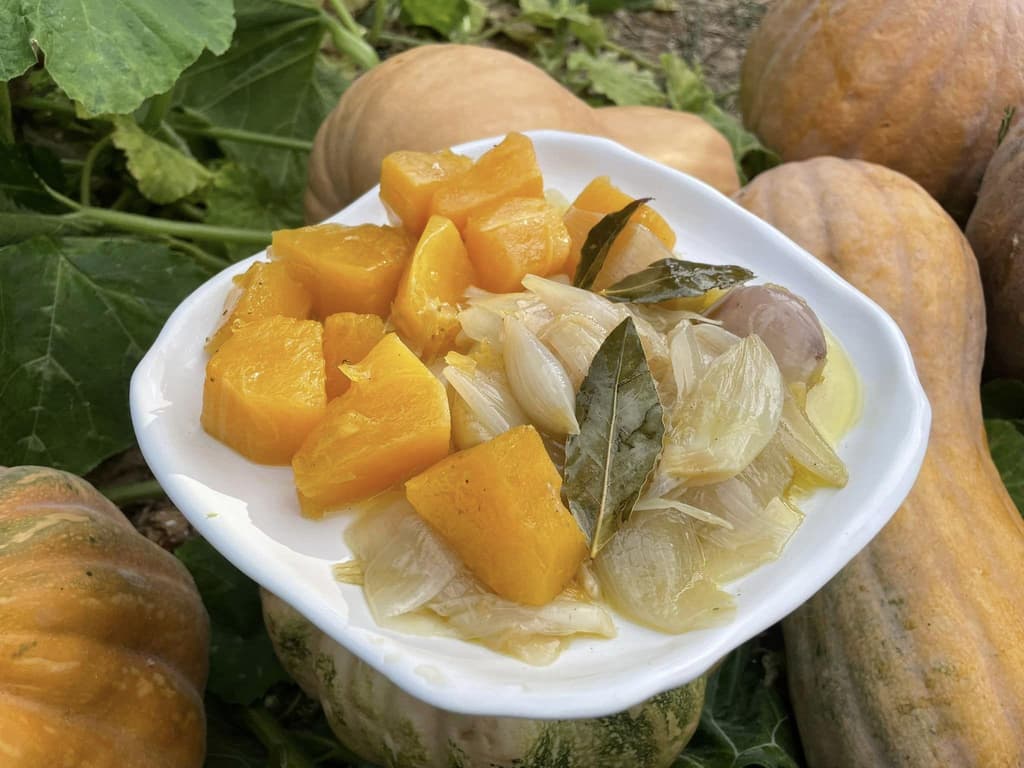
Pumpkin Stifado
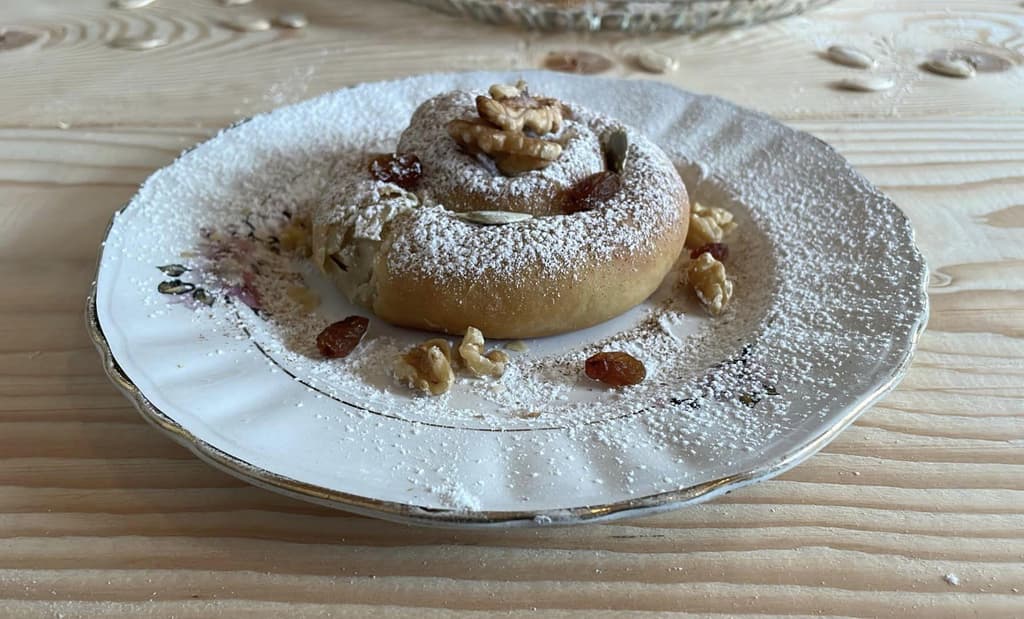
Sweet Pumpkin Pies with Raki Leaves (Oven)

Xinochondros: Sour Bulgur Pasta
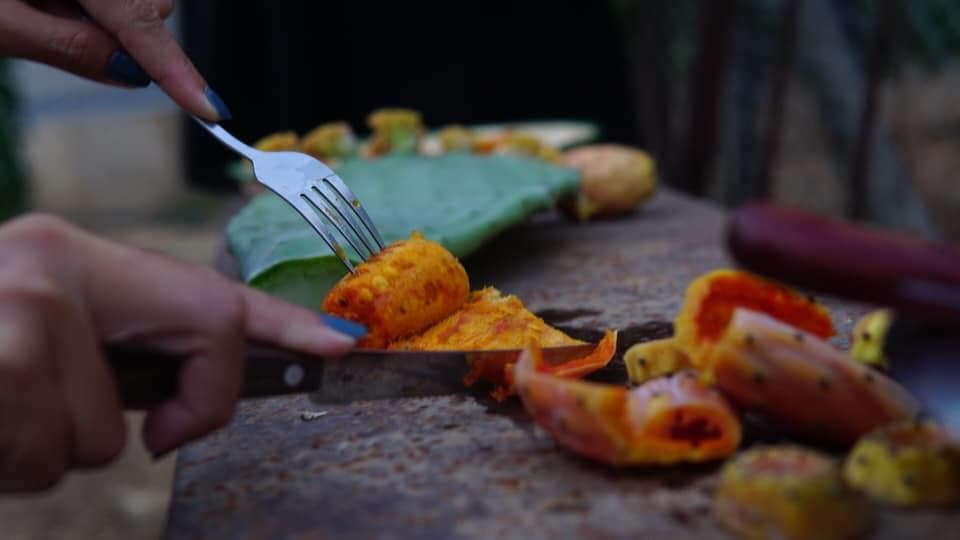
Prickly Pear or Indian Fig
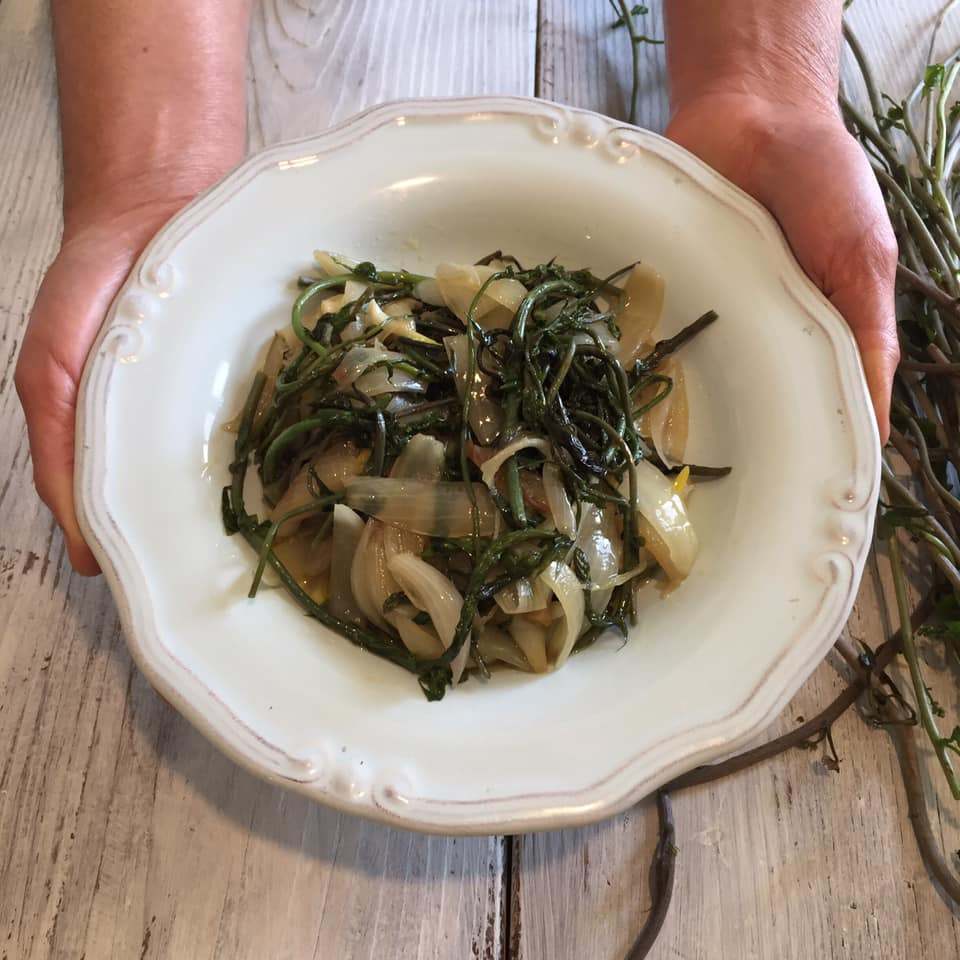
Black Bryony

Tahini Soup without Oil

Chylofta with Milk

Tyrozouli or Cretan Home Cheese

Pickled Tassel Hyacinth

Sourdough Dagoulakia
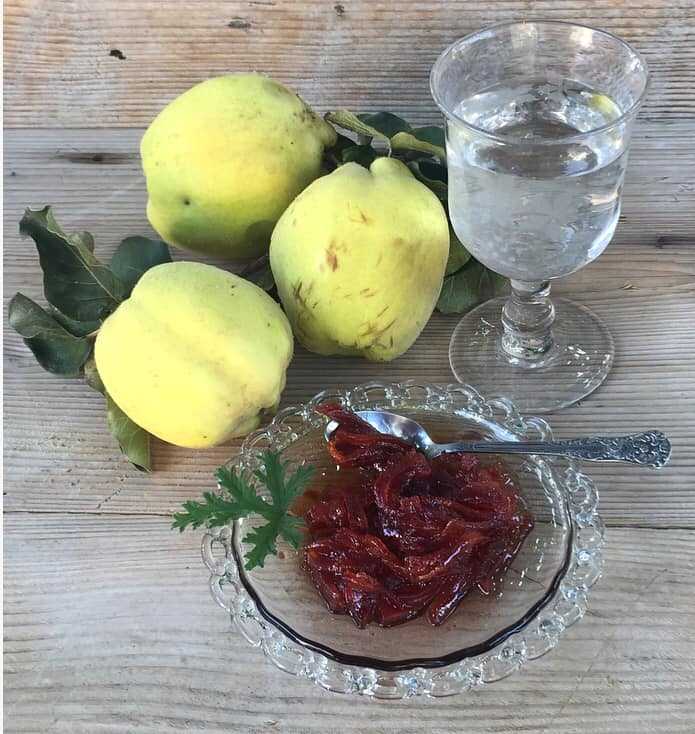
Quince Confection

Delicious Homemade Treat with Lemon Blossoms

Tiganopites: Greek Fried Pies

Dietary Practices in 17th Century Crete

Lychnarakia

Lazarakia

Kalitsounia from Chania
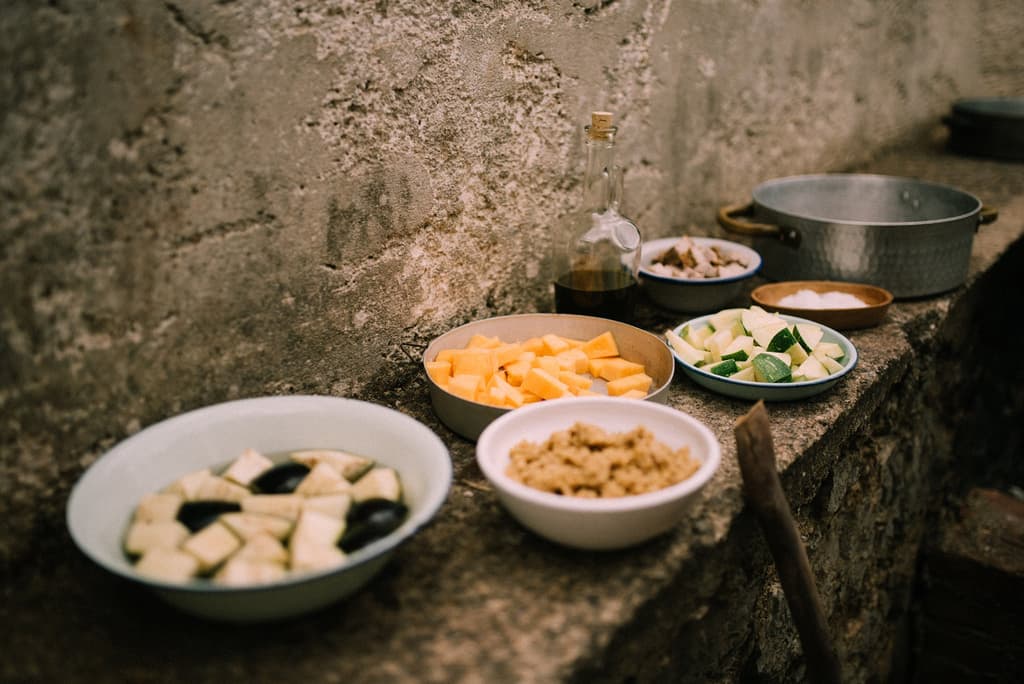
Apaki with Xinohondros and Vegetables

Chickpeas with Yachnera: A Delightful Dish
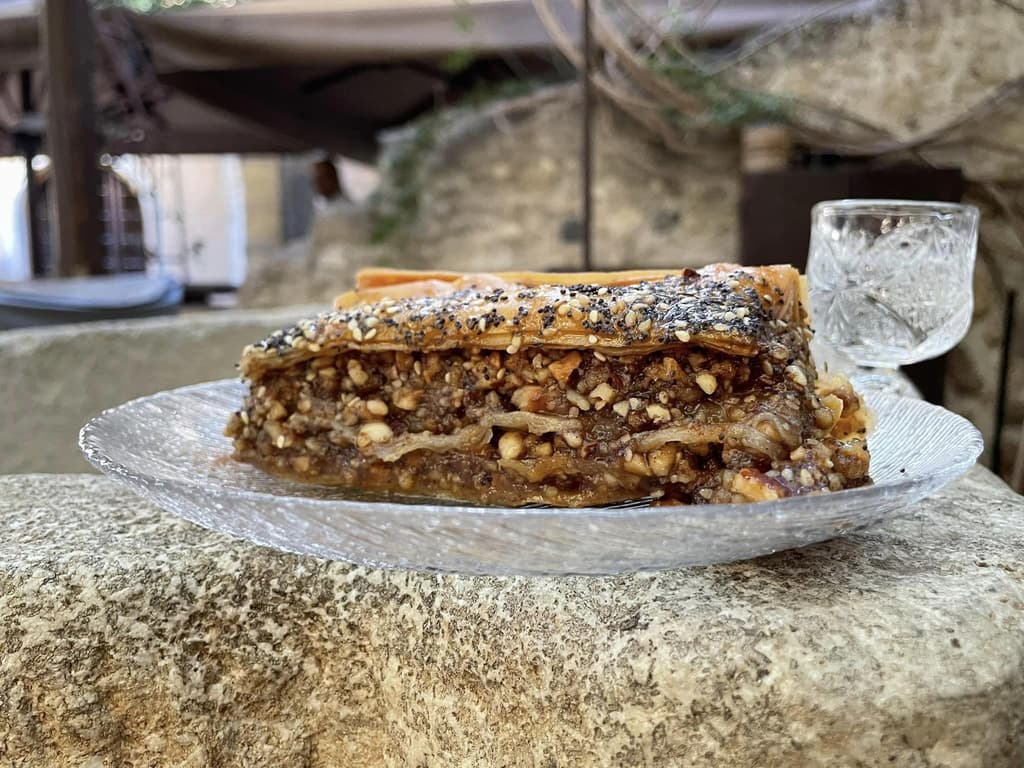
Gastrin

Fotokollyva
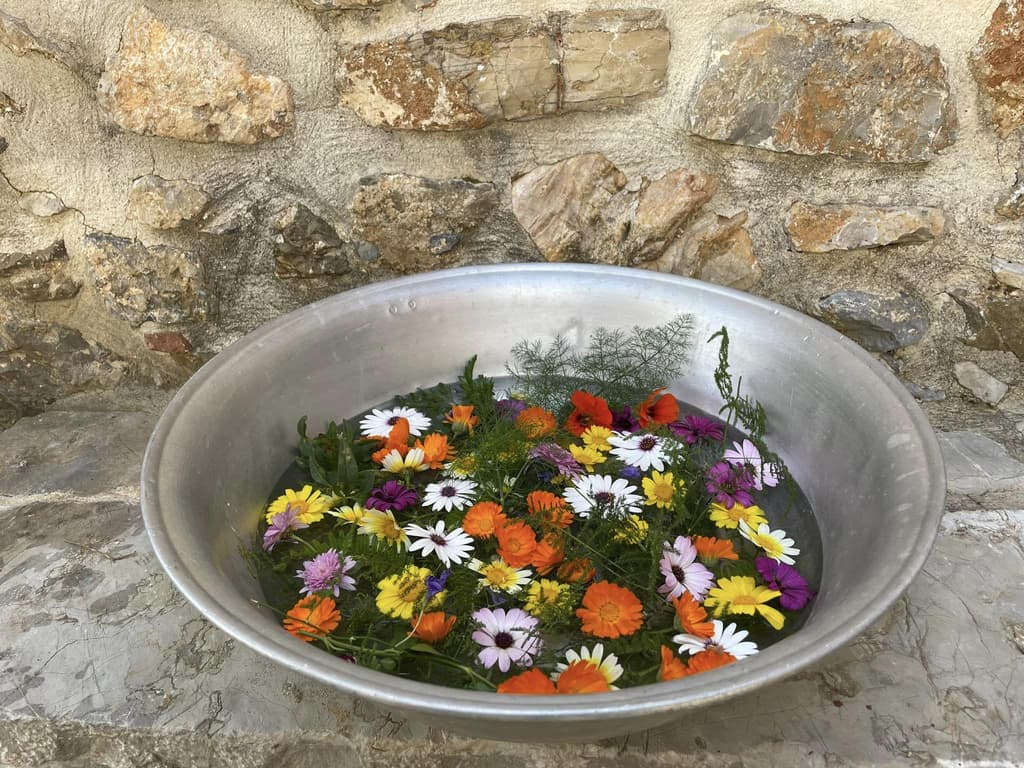
Dyeing Easter Eggs with Madder Root and Flower Blossoms

Biza or Manarolia Stew with Eggplants

Antikristo or "Ofto" Meat

Eftazymo Bread

Skioufichta Macarounia

Anevata Kalitsounia

Galatera

Sykomarides

Snails Stifado

Poppy Pies (Paparounopites)

Beetroot Salad

Bitter Orange Spoon Sweet (Nerantzi)

Loukoumia or Koubania

Fasouloryzo

Biza or Manarolia Stew with Eggplants
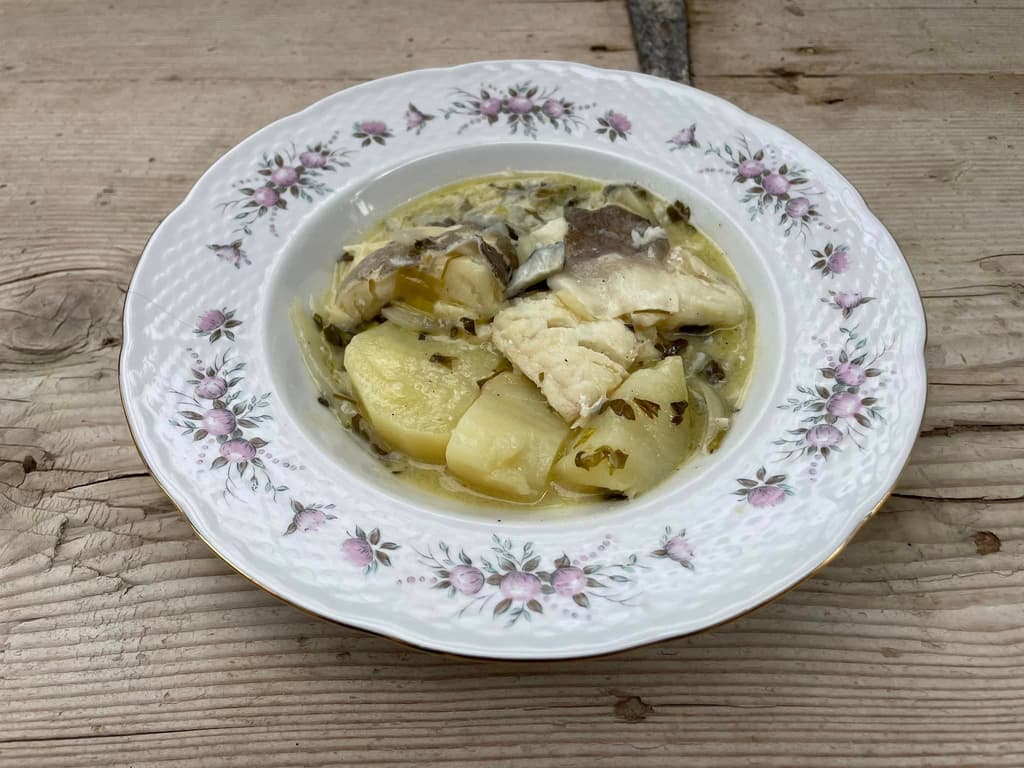
Salted Cod with Bitter Orange Sauce

Sountrimades

